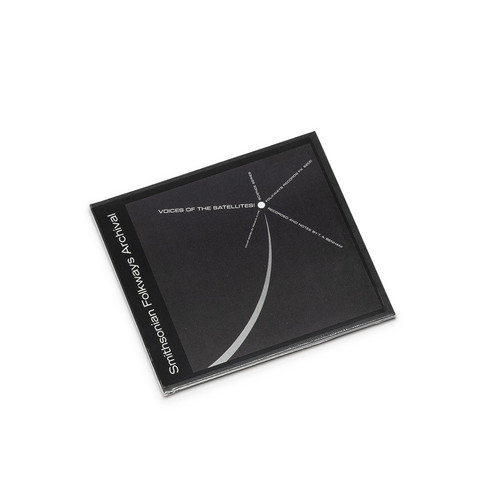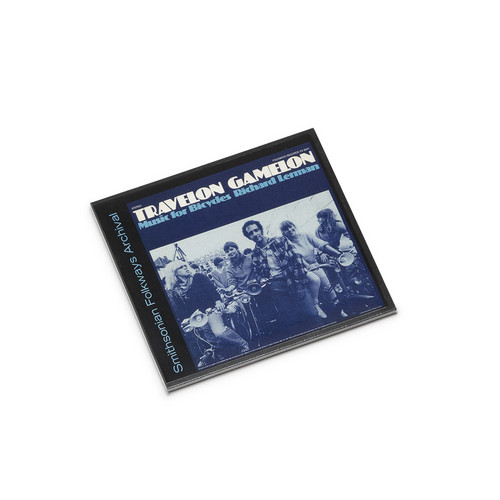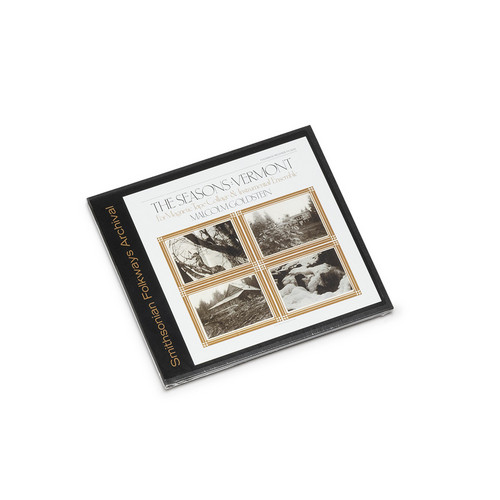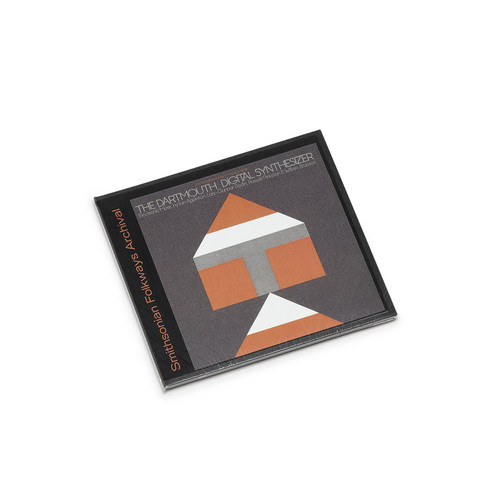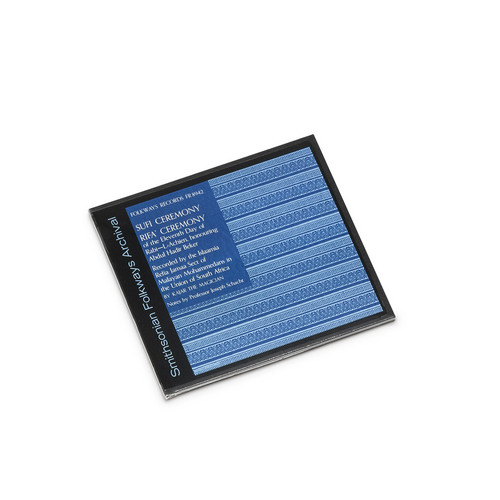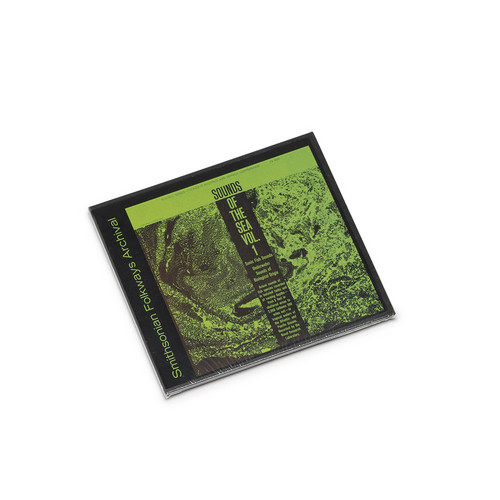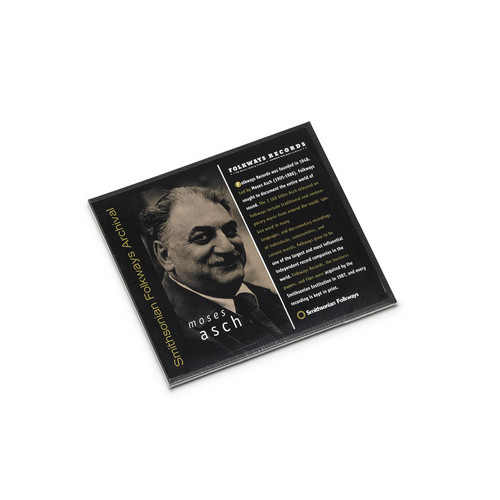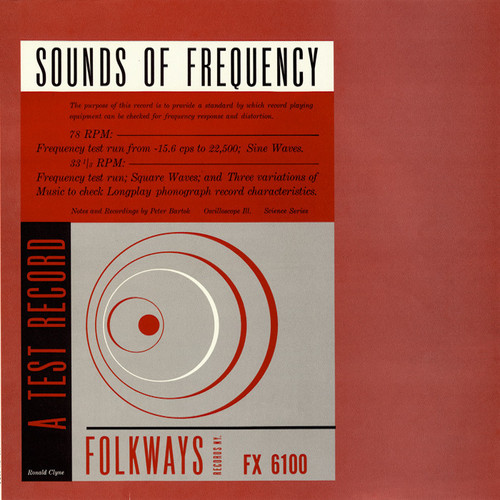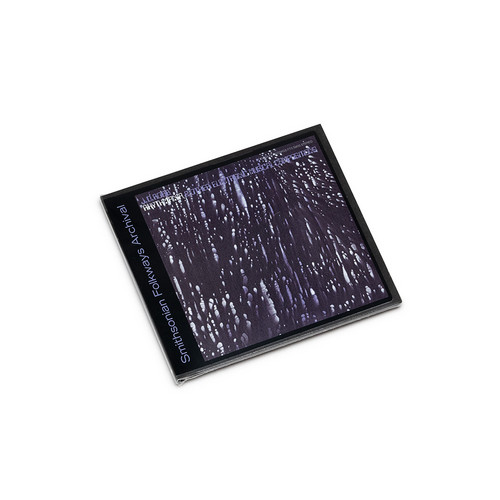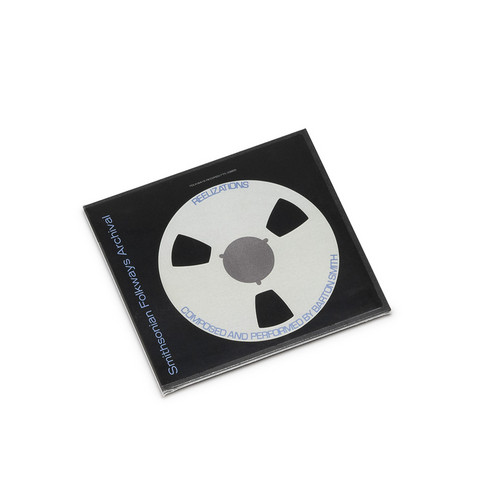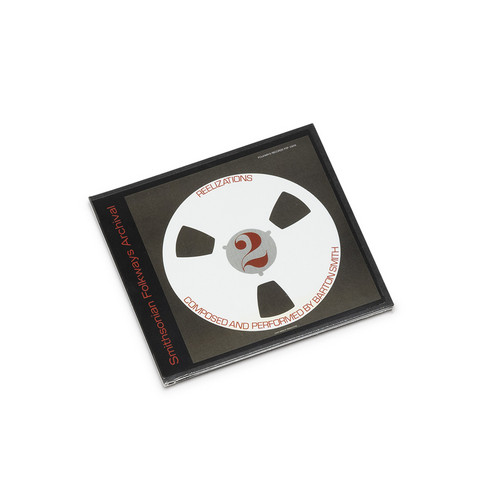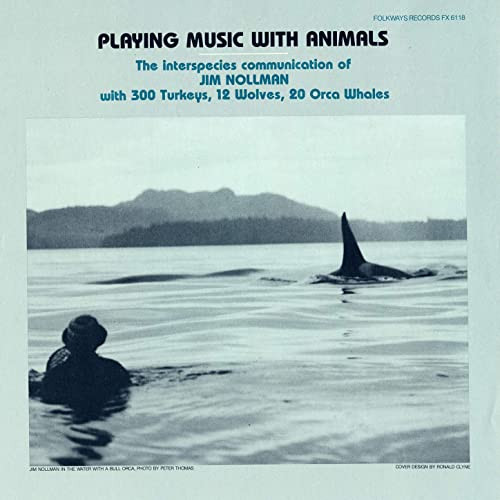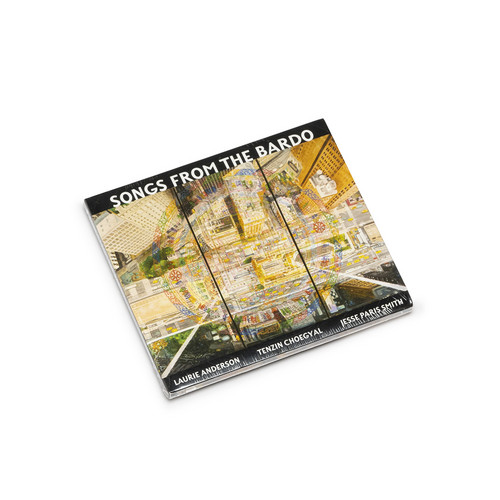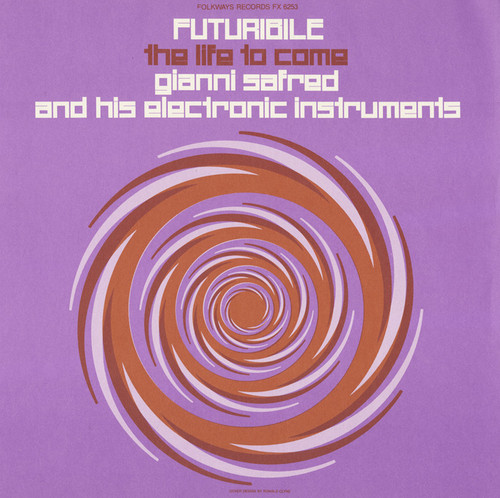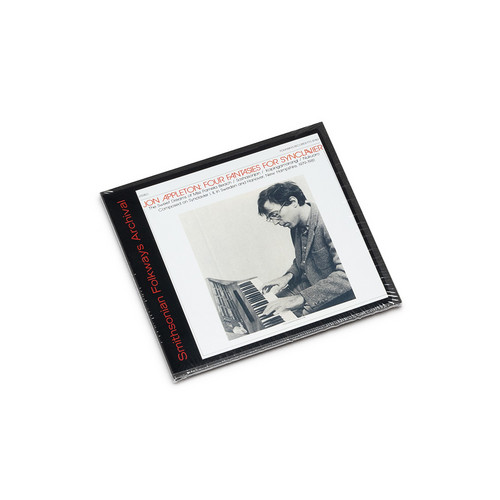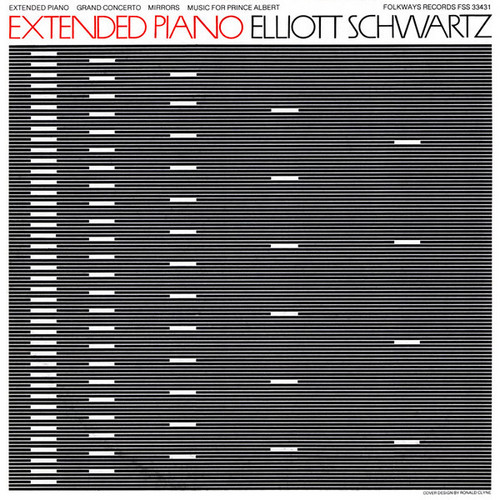★Folkways Records
Voicings For Tape / Soprano / Piano
2024 stock. Voicings for Tape/Soprano/Piano is a collection of performances by composer, educator, and pianist Sorrel Doris Hays that reflect her Southern roots and feminist themes. The first of four tracks, “Southern Voices for Tape” consists of random spoken conversations interwoven with music from a 1979 Sacred Heart concert. “Blues Fragments” is an excerpt from “Southern Voices for Orchestra” featuring soprano Daisy Newman. “Celebration of NO” is from a larger work titled “Beyond Violence” a…
Voices Of The Satellites
*2024 stock* On October 4, 1957, the space race was triggered by the Soviet Union’s launch of Sputnik I, the first human-made satellite to orbit the earth. This recording, produced and narrated by Professor T.A. Benham of Haverford College, chronicles the sounds of the first thirteen American and Soviet satellites launched during the ensuing year. One track features the audible heartbeat of Laika, the first dog in space.
Travelon Gamelon: Music For Bicycles
2024 stock. This early (1982) project from Arizona “Audio Artist” Richard Lerman presents musical composition performed with bicycles. Lerman explains: “A gamelan orchestra is a large group of percussive instruments, usually metallic, from SE Asia. In fact, the sound of such a group is not unlike the timbre of amplified bicycles.” With such an idea, he embarks on a project that captures the amplified sounds of moving bicycles in harmonious rhythms creating songs. Liner notes include detailed inf…
Tract: A Composition Of Agitprop Music For Electromagnetic Tape
*2024 stock* Created by Turkish musician and electronic music composer İlhan Mimaroğlu, Tract is dedicated to fellow countryman Nȃzim Hikmet, whom Mimaroğlu regarded “as the greatest poet of the revolutionary struggles.” Utilizing the voice of Turkish singer Tülay German (identified as Tuly Sand on this recording), Mimaroğlu creates an audio collage of political messages in the propaganda style (agitprop) of the Bolsheviks during the Russian Revolution. Although his text is based on “direct and …
The Seasons: Vermont - for Magnetic Tape Collage & Instrumental Ensemble
*2024 stock* This 1983 recording is a four-part composition representing the four seasons in Vermont. Composed by Malcolm Goldstein, The Seasons features a collage of sounds of nature infused with live instrumental/vocal improvisation structures meant to “extend the sounds of the natural environment into the sound/space of human gesture.” Performers play instruments, their own bodies, and found objects such as stones, wood, and metal. Liner notes contain Goldstein’s detailed explanation of how a…
The Dartmouth Digital Synthesizer
2024 stock. Jon Appleton, Sydney Alonso, and Cameron Jones set out to create a new digital synthesizer at Dartmouth College’s Thayer School of Engineering in 1972. They considered the computer-controlled synthesizer superior to analog because of its “ability to create, by digital means alone, time-variant timbres which make all natural sounds interesting to our ears.” This 1976 recording presents the results of their effort—four different compositions, one each by Jon Appleton, Lars-Gunnar Bodin…
Sufi Ceremony: Rifa' Ceremony of the Eleventh Day of Rabi-L-Achien Honouring Abdul Hadir Beker
*2024 stock* Sufi, or Sufism, is often defined as "Islamic mysticism.” Sufism exists in both Sunni and Shia Islam. It is not a distinct sect, rather it is an association or fraternity for the achievement of religious enthusiasm and ecstasy by means of exercise undertaken in common. This 1959 recording is of a Rifa' Ceremony performed in South Africa. The Rifa’ association was originally found mainly in the Middle East eventually spreading to Malaysia and Africa.
Sounds Of The Sea Vol. 1: Underwater Sounds Of Biological Origin
2024 stock. Did you know that cancer crabs are great percussionists, as are catfish, snapping shrimp, drum fish and black croakers? Hear the noises of our underwater friends, recorded at depths of from five feet to two thousand fathoms below by the Naval Research Laboratory in the tropical waters of the Atlantic and Pacific.
Sounds Of New Music
2024 stock. Sounds of New Music is a collection of 18 compositions from the 1920s to the mid-1950s representing attempts at a "new means of musical expression." Some use familiar instruments in new ways, while others experiment with new instruments; the formats of the compositions range from structured musical scores written for orchestra to electronically altered music using tape-recording devices. Composers include Edgard Varèse, Henry Cowell, and John Cage, whose "Dance" is played on a transf…
Seven Flute Solos
2024 stock. Employing tape overdubs, shifting tape speeds, reverberation, and echoes, flautist Charles Campo performs seven improvisational compositions. The musical settings range from pastoral and contemplative to urban and ethereal.
Science Series: Sounds of Frequency
2024 stock. While some of the sounds on this album could be the noise produced by various electric equipment (fax machine buzz, phone busy tones etc.) this album is actually to provide “a standard by which record playing equipment can be checked for frequency response, and distortion, without equipment other than an oscilloscope and volume indicator.” Recorded and annotated by Peter Bartok. Liner notes include detailed information about each track (frequency) and method of testing.
Rhythmania And Other Electronic Musical Compositions
2024 stock. Released in 1976, Rhythmania and Other Electronic Musical Compositions spotlights the sounds of a specially assembled Moog Synthesizer (a type of analog synthesizer). The variety is impressive: from birdcalls and the sounds of machines in a factory to waltzes. Pieces such as “Cosmic Dance of Shiva” and “Hear the Clock Tick” are “composed of natural sounds recorded through a microphone,” rather than generated electronically like the “Triptych” fugues. This album also highlights electr…
Reelizations 1
2024 stock. This 1980 recording explores combinations of acoustic instruments and recording technologies. The increasing cost of large ensembles performing new works led composers to experiment with inexpensive alternatives. Barton Smith creates his own orchestra mixing recordings and acoustic instruments with everyday items such as swivel chairs and glass bottles. Liner notes include descriptions of how each track was composed, the composer's biographical information, and suggestions for how ea…
Reelizations 2
2024 stock. This 1982 recording builds on Barton Smith's previous Reelizations release, incorporating acoustic and electronic instruments with tape-recording technology into a unique one-person orchestra. The ability to create and perform music with the use of new technology and without large and expensive orchestras made sharing creations easier, especially for accompaniment in film, radio, and television. Liner notes include descriptions of how each track was composed, instrumentation, and sug…
Playing Music with Animals: Interspecies Communication of Jim Nollman with 300 Turkeys, 12 Wolves and 20 Orcas
2024 stock. On this one-of-a-kind record, Jim Nollman showcases his experiments with "interspecies communication." Using a variety of instruments and vocalizations, Nollman improvises with turkeys, wolves, and orcas. The interactions are sometimes funny, often surprising, and always fascinating. The liner notes include essays by Nollman on his environmental theories and experiences trying to communicate with animals.
Outer Space
2024 stock. "Ingenious use of echo, artificial reverberation and electronic alterations gives the music in this category a weird, spooky futuristic, 'out of this world' quality, well-suited to super-natural happenings of any kind. Piano, drums and electronic instruments are used to achieve the strange atmosphere and spatial sounds." Vaclav Nelhybel crafts a supernatural world, describing nebulae, meteors, star clusters and craters on Mars with sounds natural and manipulated to tell the story of …
Songs From The Bardo
Songs from the Bardo begins with a bell ringing out once, twice, three times, as a ritualistic chant emerges from the dense silence. The collaborative composition by avant-garde icon Laurie Anderson, Tibetan multi-instrumentalist Tenzin Choegyal, and composer and activist Jesse Paris Smith is a guided journey through the visionary text of the Tibetan Book of the Dead, unfolding in an 80-minute ebb and flow of sound and words. Songs from the Bardo is a transporting experience, meant to draw the l…
Futuribile (The Life To Come)
*2024 stock* What did the future sound like in 1980? Futurible is brought to you by Italian composer Gianni Safred and will take you both back in time and into the future. Safred uses Moog and Arp synthesizers that have now become commonplace in popular music. These sounds are "suitable for space travels, space explorers, experiments, fantastic adventures, future enterprises, interplanetary stories, important achievements, industrial accomplishments of broad implication… modern scientific discov…
Four Fantasies For Synclavier
*2024 stock* In this 1982 Folkways release, Jon Appleton plays four compositions written for the Synclavier, a digital synthesizer he helped to develop in the late 1970s. “The Sweet Dreams of Miss Pamela Beach” was recorded in a studio using a 24-track recorder to “layer” portions of the music. The remaining three pieces were performed live with “some small sections and accompaniments contained in the digital memory of the instrument at the time of performance.” Liner notes contain brief descrip…
Extended Piano
*2024 stock* Elliott Schwartz plays four of his compositions for solo piano and pre-recorded tape, a project that remains "a continuing attempt to enhance, expand, obscure, develop or otherwise modify the piano sonority and the act of piano performance, through electronics." In his improvisatory piece "Grand Concerto" he uses fragments from the Grieg, Tchaikovsky No. 1 and Liszt No. 1 piano concertos; it is as epic in scope as the classical favorites.

